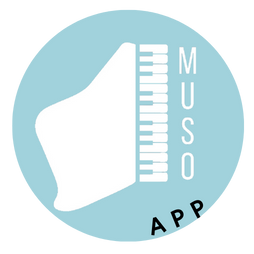The world of music is like a vast ocean of notes, rhythms, and melodies waiting to be discovered. While the idea of reading music might initially seem overwhelming, it is entirely possible to teach yourself with the right tools and mindset.
Research on Music Reading and Brain Development:
Engaging in music reading has been shown to have profound effects on brain development. Research indicates that musicians often have enhanced connections between the two hemispheres of the brain, leading to improved memory, attention, and problem-solving skills. The process of reading music involves decoding symbols, recognising patterns, and translating them into motor actions, which collectively stimulate various brain regions.

A study published in the Journal of Neuroscience found that early music training increases the brain's ability to process sounds, which can enhance language skills and auditory processing. This suggests that learning to read music not only benefits musical abilities but also contributes to overall cognitive development.
Here’s how you can embark on this musical journey and how the Muso Method can support you along the way.
Understanding the Basics with a Twist:
Traditional methods often rely on mnemonics like "Every Good Boy Deserves Fruit" to remember notes on the staff. However, the Muso Method introduces a unique number system that simplifies this process. By assigning numbers to lines and spaces, learners can quickly grasp the concept of note positions without relying on lengthy phrases. This approach enhances cognitive retention and accelerates the learning process, making it particularly effective for beginners.
By using a number system, the Muso Method eliminates the need for rote memorisation of mnemonics, allowing learners to focus on understanding music theory and note placement. This method fosters a deeper comprehension of music and encourages learners to explore and experiment with confidence.
How Muso Method Flash Cards Facilitate Self-Learning:
The Muso Method Flash Cards are more than just a set of cards—they are a comprehensive learning tool designed to empower self-learners. Here's how they work:
- Visual and Kinesthetic Learning: The flash cards provide a tactile experience that combines visual cues with physical interaction. This dual approach caters to different learning styles, making it easier to internalise musical concepts.
- Interactive Engagement: Each card is designed to engage learners actively. By using the number system, students can quickly identify notes and understand their placement on the staff. This interactive element transforms learning from a passive activity into an engaging game.
- Structured Progression: The flash cards are organised to guide learners through a structured progression of skills. Starting with basic notes and gradually introducing more complex concepts, they ensure a steady and manageable learning curve.
Did you know we offer a Free Challenge with Every Purchase called Four2Six Challenge?
To further enhance your music note learning experience, the Muso Method offers a FREE challenge with every purchase of the flash cards. [CHECK OUT MORE HERE] This challenge provides step-by-step guidance and additional resources to help you master music reading. It’s designed to complement the flash cards and offer extra support as you embark on your self-learning journey.

Conclusion:
Teaching yourself to read music is not only possible but can be an enjoyable and enriching experience with the right tools.
Embrace the journey, practice consistently, and watch as your musical abilities flourish.
Happy learning!


